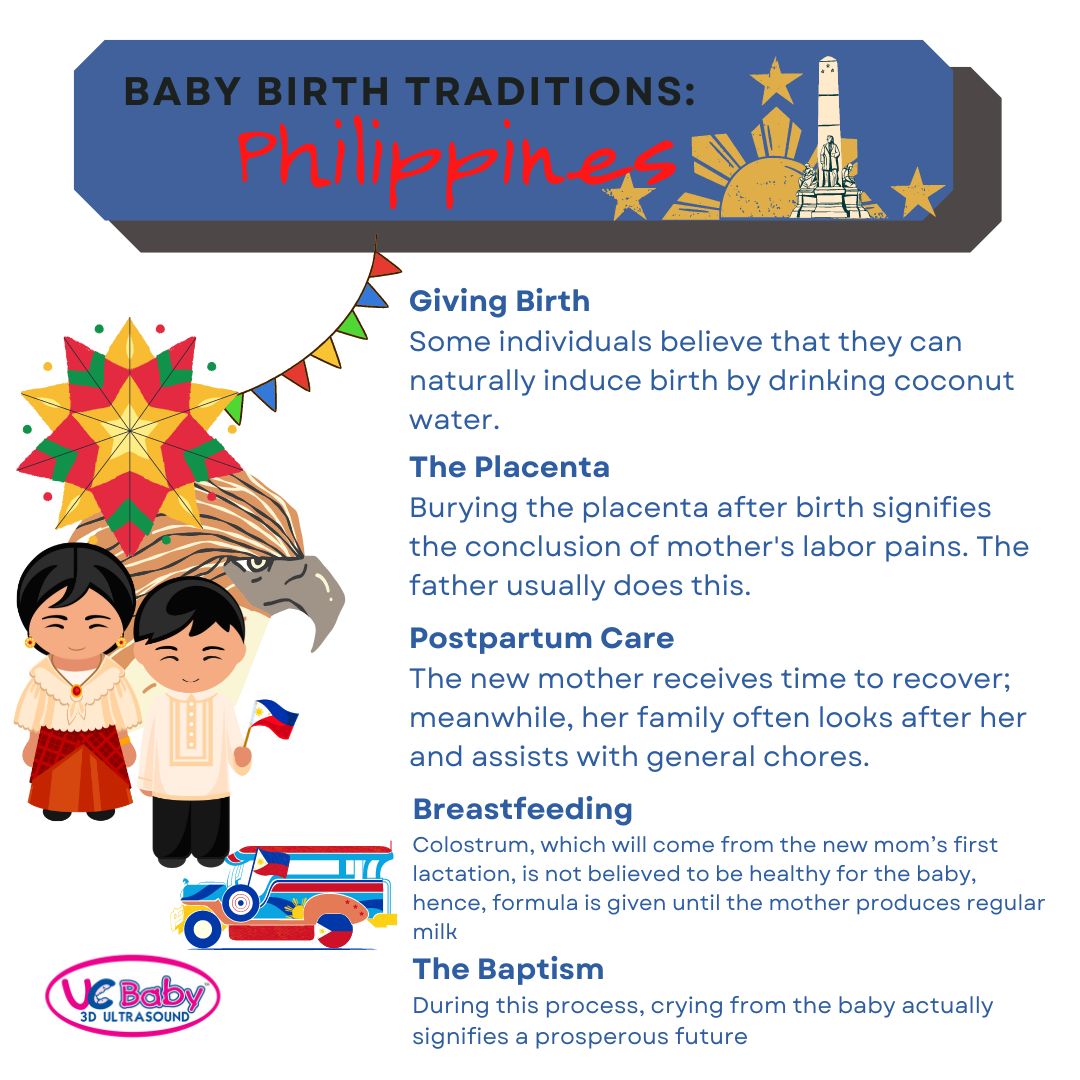The beautiful thing about birth customs is that they’re celebrated uniquely worldwide. Each culture follows its traditions to commemorate the arrival of a new baby. In this blog, we will discuss the baby birth traditions in the Philippines.
In Asia, birth traditions look slightly different from what’s considered typical in Canadian or American culture. Let’s take a look at how individuals in the Philippines traditionally celebrate a new birth.
Watch this Video: Baby Birth Tradition - PhilippinesWhat are the popular baby birth traditions in the Philippines?
Filipino pregnancy and birth experiences heavily revolve around following certain beliefs to ensure that delivery occurs as smoothly as possible. After birth, dealing with the placenta appropriately and allowing the mother and baby to rest are believed to promote the pair’s well-being.
Pregnancy Care
There are many Filipino beliefs surrounding how a mother can ensure that her pregnancy is healthy. For example, the mother-to-be should avoid wearing nail polish, wrapping any items around her neck, and cutting her hair — these could all lead to unfavourable outcomes regarding the baby and mother’s wellbeing. On the other hand, if pregnant women are hoping to have twins, they should consume “twin” fruits to increase their luck.
Giving Birth
Some individuals believe that they can naturally induce birth by drinking coconut water. It is also believed that the mother can put squash leaves on her abdomen and hold onto solid items to make the baby’s delivery more seamless.
Relatives often visit the hospital during the baby’s birth, especially female ones. However, visitors should maintain some distance from the hospital room’s door as this can result in labour issues. Additionally, they should not touch the mother because she may transmit her labour pain.
The Placenta
Burying the placenta after birth is a widely-known tradition in the Philippines. It is meant to signify the conclusion of the mother’s physical pain from labour. Some also believe that this prevents your child from growing into a troublesome individual and that it promotes the healing of the womb. The burial should ideally take place shortly after birth, and the baby’s father generally does it.

Postpartum Care
The new mother receives time to recover; meanwhile, her family often looks after her and assists with general chores. It is important for the mother to have the opportunity to bond with her new child. Moreover, some moms will snugly wrap items around their abdomen to support the uterus’ healing process.
Breastfeeding
Colostrum, which will come from the new mom’s first lactation, is not believed to be healthy for the baby. Family members will give the baby an alternative formula until the mother produces her regular milk. In the Philippines, some individuals also refrain from breastfeeding when they’re tired or have negative emotions. They don’t want these feelings to transfer to their little ones.
The Baptism
Just like in many other countries, religious families may choose to baptize their baby. During this process, crying from the baby actually signifies a prosperous future. More extreme crying indicates even more good luck for the little one.
References:
Birthing Beliefs in the Philippines
The Philippines’ Birth Practices Facilitate Maternal and Infant Mortality Declines
Filipino Pregnancy & Baby Beliefs
Written by: Alicia Chow
Check out our Baby Birth Tradition blog series – Baby Birth Traditions – Italy





 Invite families and friends to witness this memorable event of your pregnancy. Celebrate that special child-bonding moment with your loved ones, wherever they are in the world.
Invite families and friends to witness this memorable event of your pregnancy. Celebrate that special child-bonding moment with your loved ones, wherever they are in the world. There is nothing more beautiful than your baby's heartbeats. Save that sound forever in a UC Baby® Heartbeat Bear®. It's not just a great keepsake, but also an effective way to sooth your baby to sleep.
There is nothing more beautiful than your baby's heartbeats. Save that sound forever in a UC Baby® Heartbeat Bear®. It's not just a great keepsake, but also an effective way to sooth your baby to sleep.

